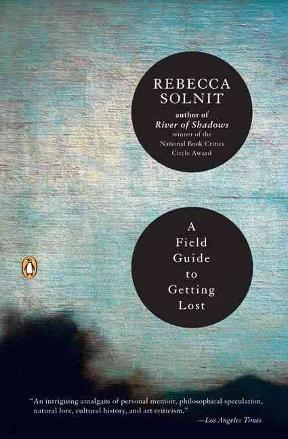
The other chapters in the collection explore physical concepts of exploration, discovery and rescue missions, and question whether in the modern technological age we’ve lost the ability to be lost and to truly read our surroundings, as well as the emotional effects of displacement, the loss of loved ones, the balance between being held captive versus assimilating to a new way of life, and numerous other concepts.

Solnit then sets this natural phenomenon up as comparison beside human desire, and questions if we should be searching for the beauty in the blue of our longing, and not just aiming to fulfil it. Solnit discusses the way that this blue is only visible when far away, and were you to reach the town on the horizon or the blue heights of the mountains, they would no longer be blue but rather their actual colour. This chapter introduces the concept of “the blue of distance”, referring to the natural light effect that causes a strip of blue along the horizon. Solnit discusses getting lost as both a physical and psychological act, juxtaposing the physical act of getting and being lost due to an unfamiliar or unreadable climate, with the personal and abstract psychological ‘lost’, the causes for this state and the shapes it can take, and how it can occur regardless of the physical placement.Ī particularly strong piece, in my opinion, is the first installment in the recurring The Blue Of Distance chapters.

Rebecca Solnit’s 2005 non-fiction collection A Field Guide To Getting Lost uses various personal, literary and historical examples to explore, as the title suggests, the concept of getting lost.


 0 kommentar(er)
0 kommentar(er)
